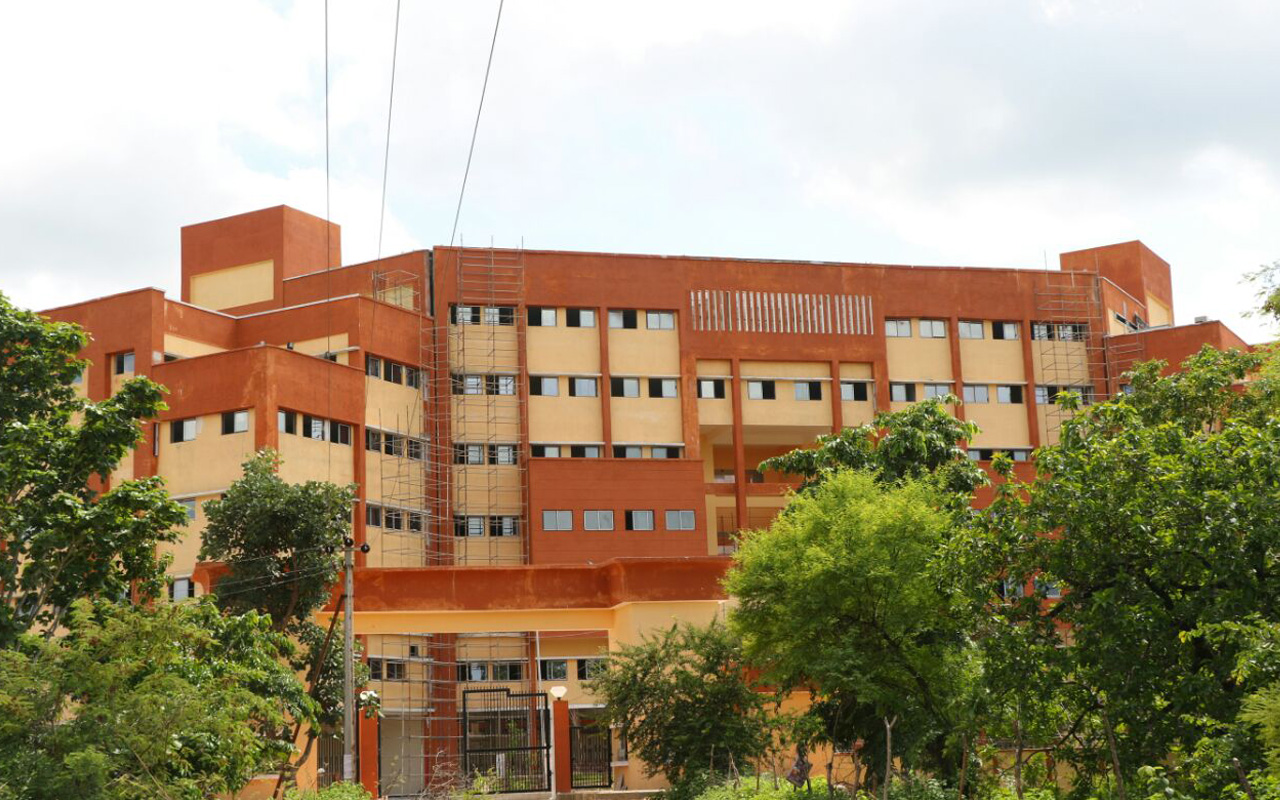Government Medical College and Hospital, Balangir

Balangir is a city and municipality in Balangir district in the state of Odisha, India. It is also the headquarters of Balangir district. Balangir has a rich cultural heritage. It is also known as the cultural hub of Western Odisha. Balangir city has many cultural groups who are trying hard to preserve the dying down Kosali folk arts and dance. Balangir municipality is divided into twenty one wards. It is also home to the Ordnance Factory, Balangir (at Badamal) which is run by the Ordnance Factories Board, Ministry of Defence, Government of India to manufacture various types of products for the Indian Armed Forces. It is spread over an area of 12,200 acres (4,900 ha).
Balangir is located at 20.72°N 83.48°E. It has an average elevation of 383 metres (800 feet) above sea level.
As of Balangir district had a population of 1,648,997. Males constitute 830,097 of the population and females 818,900. Rural Population is 1,451,616 and urban population is 197,381. Balangir town had a population of 98,238, males constitute 50,582 of the population and females 47,656. Communicative language of Balangir is and for education and official purpose English, Hindi and Odia are mostly used.
Balangir’s name is said to have been derived from Balaram Garh, a fort, built here in the 16th Century by Balram Deo, the 19th Raja of Balangir (Ex-Patna State) and founder of Sambalpur kingdom.
Balangir was an obscure village till 1871 when the Court of Wards administration during the minority of the then ruler Ram Chandra Deo III shifted the capital from Patnagarh. Immediate steps were taken to build a planned township.
Patnagarh, which was the capital of the Kingdom of Patna for several centuries, was considered unsuitable to be the state headquarters because of its unhealthy climate. The moats and the bamboo thickets which had long protected the place against enemies became breeding ground of mosquitoes causing widespread malaria. The place was also not on the direct road from Bhawanipatna to Sambalpur. So, Balangir was selected to be the headquarters not only because of its climate but also for its admirable location on the route connecting the headquarters of Sambalpur with that of Kalahandi.
The Plan of Balangir Town was prepared by Pandit Chintamani Bidyabhusan as a square town with roads crossing one another at right angles was accepted and the new township was constructed to the south of the old village.
Sir Douglas, the then Deputy Commissioner of Sambalpur, got the sanction of the government and transferred the Headquarters from Patnagarh to the new town of Balangir in 1872. Old Balangir is now known as Junha Dihi meaning the old house site.
During the administration of Maharaja Rajendra Narayan Singh Deo the city was beautified by laying out Rajendra Park and by the Rajendra Experimental Farm and construction of several fine buildings. The X-ray ward, the maternity ward and the Dairy farm were started and a Museum for preservation of antiquities was also organised. Balangir City is famous for Sambalpuri Sarees and dress materials.


